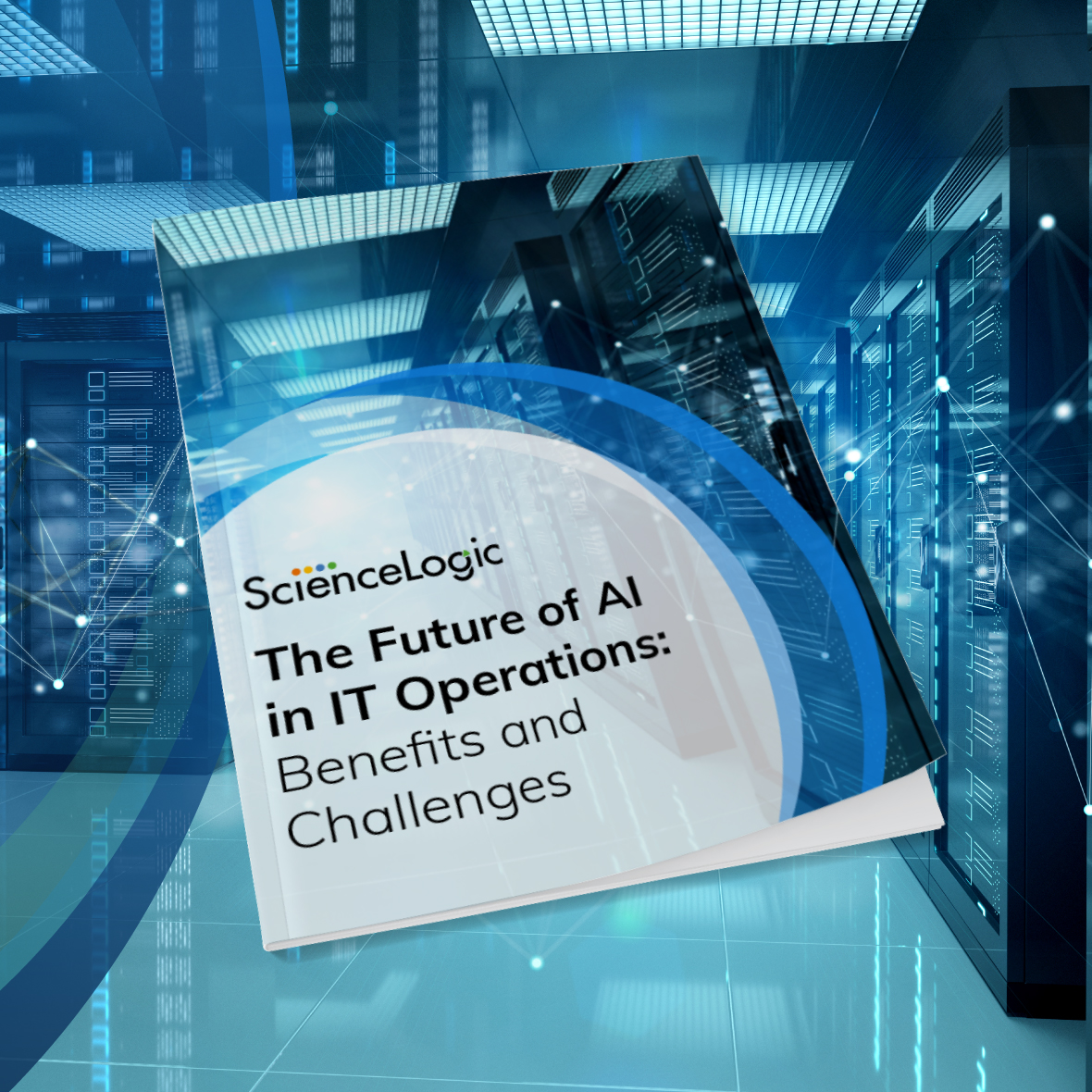As IT environments continue to expand in scope and complexity, understanding their impact on organizations is more important than ever. That’s why ScienceLogic commissioned research specialist Vanson Bourne to survey 400 IT operations professionals across the USA, UK, Germany, and Canada with the goal of understanding the challenges they’re facing and the technologies—including automation, AI, and generative AI—they’re using to overcome them.
The report, titled “The Future of AI in IT Operations: Benefits and Challenges” offers useful context and insights on where organizations fall on their AIOps adoption and overall journeys to Autonomic IT. While adopting AI can address challenges in IT operations, it first requires consolidated monitoring, as AI cannot act upon devices or data it cannot see. That’s why we’ve broken the journey into three steps—crawl, walk, and run—based on the whitepaper’s findings.
Crawl – The right foundation for data management
Nearly all organizations (99.7%) represented in the survey acknowledged the ability of AI and machine learning to overcome IT monitoring, alerting, and response challenges, including improved staff efficiency/productivity, faster issue identification, and the ability to predict issues before they occur. And yet, the data also showed that many organizations are still in the earliest stage of their journeys, with around half requiring multiple tools for monitoring and lacking a holistic view of their environment.
When IT is siloed, the result is a chaotic environment—or “data swamp”—that undermines operations. Many organizations also think they’re further along on their Autonomic IT journey than they are, as evidenced by the fact that nearly all organizations surveyed (98%) face barriers when it comes to integrating observability software. Whether the issue is siloed tools, low visibility, or being reactive, the reality is that organizations must improve their foundation before they can reap the benefits of new technologies.
Walk — Consolidate tools for comprehensive observability
Shifting to an all-in-one platform like the ScienceLogic AI Platform can help organizations get the above challenges under control and, in turn, progress on their journey to Autonomic IT. By modifying and simplifying tech sprawl, IT operations professionals can break down siloes and secure a holistic view of their environment—one in which data from previously isolated systems converge into a contextualized data lake for more meaningful analysis, coordination, and decision-making.
ITOps professionals by and large understand the positive impact such convergence can have on their work, citing benefits such as the ability to find issues faster, if not predict them before they occur. Indeed, the ScienceLogic AI Platform is equipped with Skylar Automated RCA, which eliminates the manual work required to diagnose root cause, with generative AI summarizing the issue and offering recommendations for remediation. This lets organizations easily embrace automation to free up IT teams’ time and resources for more innovative undertakings.
Run – Realize the benefits of AI, data and automation
You must crawl and walk before you can run. Only with the aforementioned infrastructure in place can organizations reap the full benefits of an automated approach powered by generative AI. That’s because AI is only as good as the data it’s trained on. Thus, without sufficient observability and data management, generative AI won’t be as powerful as it could be. From the always-on unsupervised anomaly detection enabled by Skylar Analytics to the automated plain-language guidance of Skylar Advisor, the goal is for organizations to work towards the fifth and final stage of the Autonomic IT journey: a self-healing, self-optimizing IT environment with exceptional efficiency, cost savings and customer experiences.
Additional ScienceLogic research shows that the benefits of reaching this level of maturity are undeniable: root cause analysis that’s ten times faster, a 60% improvement in mean time to remediate, a 50% reduction in IT complexity and costs, a 90% reduction and manual effort, and 100% visibility. Of course, the survey showed that getting to this level requires other initiatives as well, such as gaining buy-in from senior management and upskilling existing staff. Generative AI can assist with the latter as well, though, as it’s a powerful learning tool.
The Bottom Line
Achieving Autonomic IT is not something that happens overnight. Instead, it’s an ongoing journey that requires laying a strong foundation of consolidation and visibility. For many organizations, the promise of generative AI has made upgrading monitoring capabilities a more urgent priority. According to our research with Vanson Bourne, nearly four in ten organizations are already working to consolidate their IT environments.
And yet, as we’ve noted already, challenges persist. That’s why it can be helpful to find a trusted partner like ScienceLogic to help you along this important journey. Our platform is simplified, efficient, and proven. With Autonomic IT, you can improve uptime and performance, streamline operations processes, and drive continuous improvement.
Read the full whitepaper here, and learn more about how the ScienceLogic AI Platform can help you walk, then run, towards the rewarding finish line that is Autonomic IT.
 See ScienceLogic in actionTake a Tour
See ScienceLogic in actionTake a Tour Take Skylar One for a SpinStart Your Test Drive
Take Skylar One for a SpinStart Your Test Drive The Gartner® Magic Quadrant™ for Observability PlatformsRead the Report
The Gartner® Magic Quadrant™ for Observability PlatformsRead the Report The Forrester Wave™: AIOps Platforms, Q2 2025Access the Report
The Forrester Wave™: AIOps Platforms, Q2 2025Access the Report Future-Ready IT: Secure Migration, Faster Value, and Smarter OperationsWatch Now
Future-Ready IT: Secure Migration, Faster Value, and Smarter OperationsWatch Now
